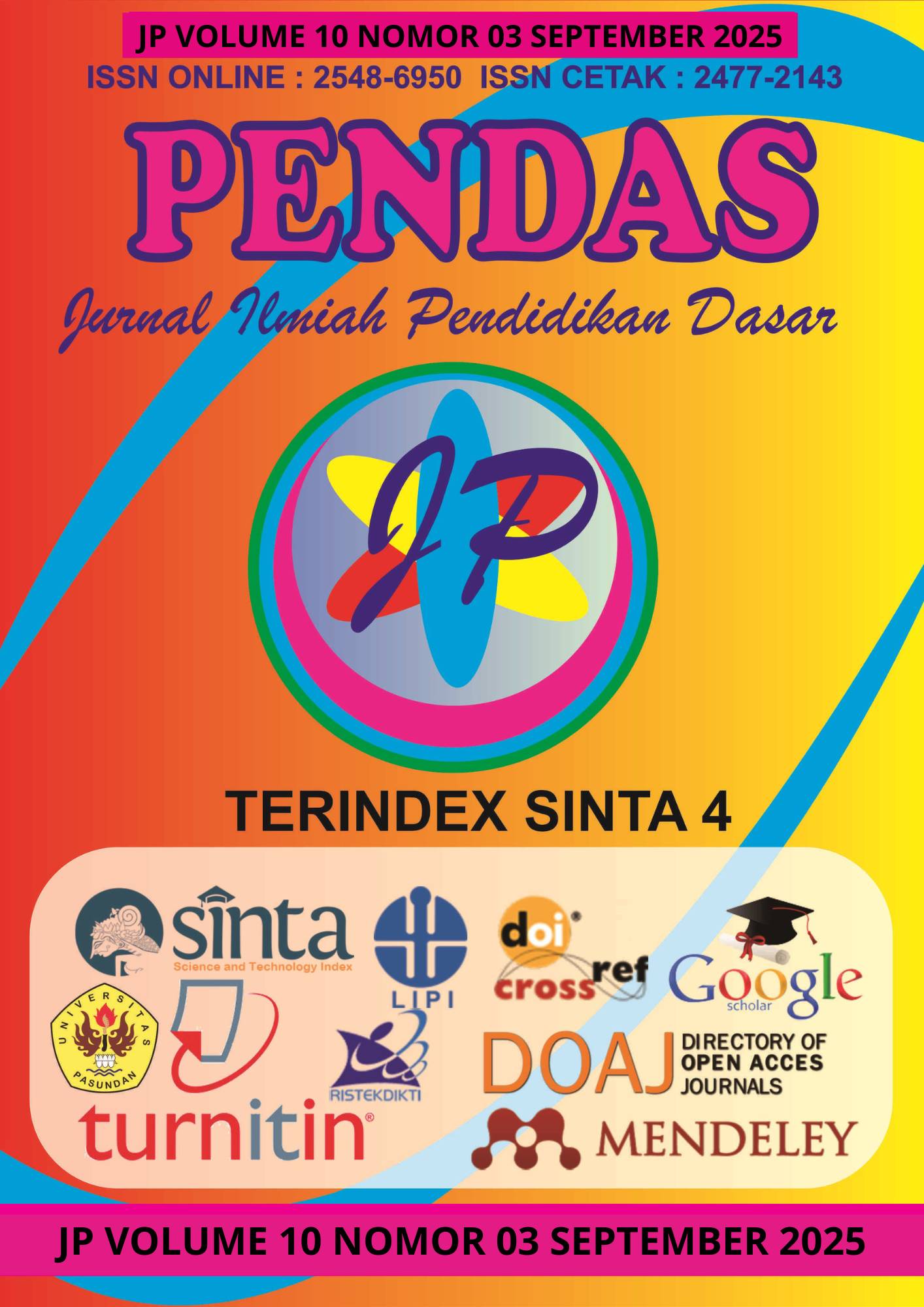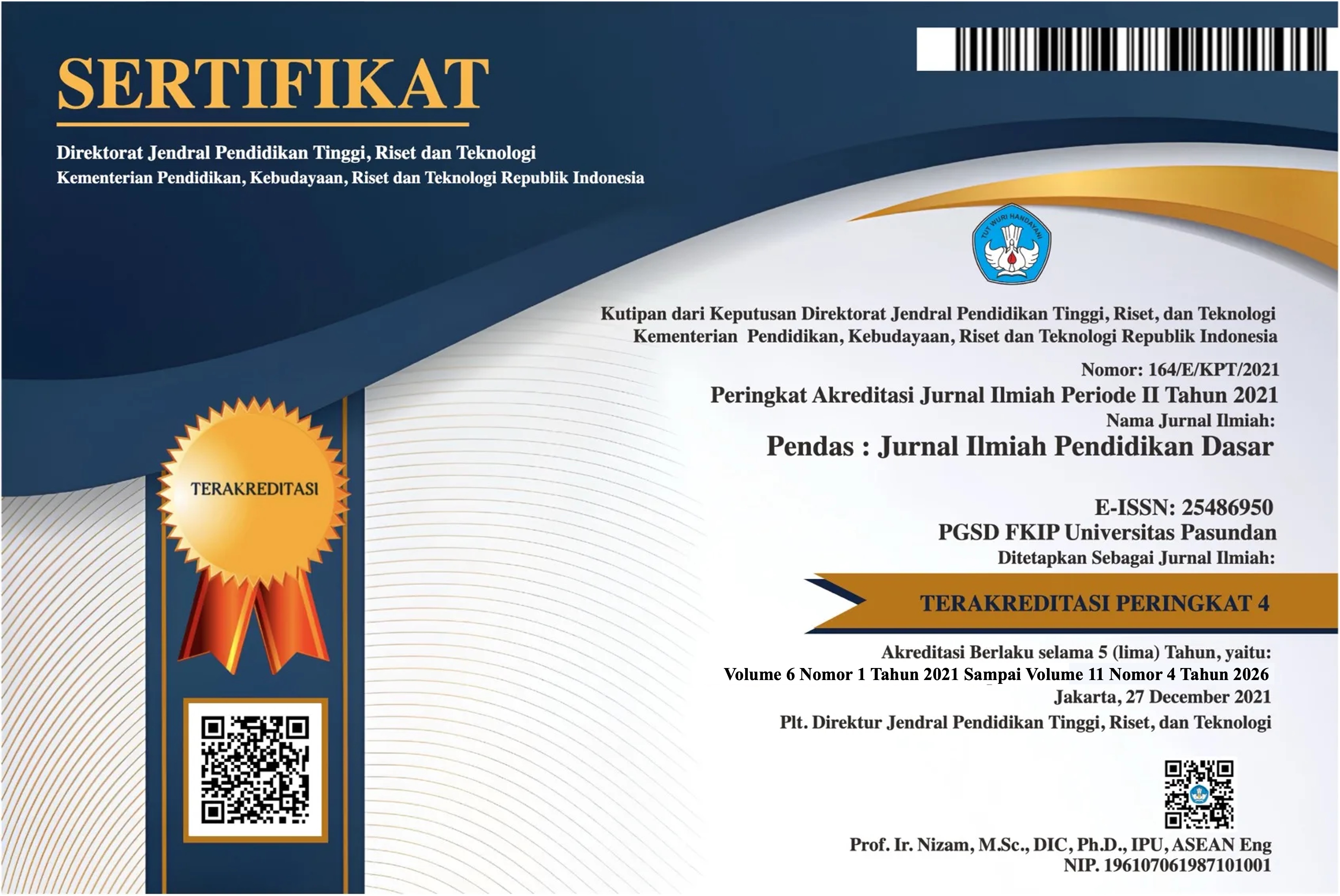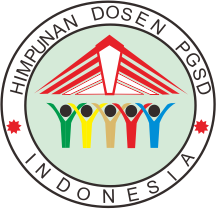ANALISIS MISKONSEPSI MATERI BILANGAN DESIMAL PADA BUKU PELAJARAN MATEMATIKA SISWA SMP KELAS VII
DOI:
https://doi.org/10.23969/jp.v10i03.33282Keywords:
Misconceptions, Decimal Numbers, Textbooks, Junior High School MathematicsAbstract
This study aims to analyze the types of misconceptions found in the presentation of decimal number material in grade VII junior high school mathematics textbooks. The research method used was qualitative with a content analysis approach. The data sources consisted of two officially published mathematics textbooks by the government, namely the 2017 revised Curriculum 2013 edition and the 2022 Merdeka Curriculum edition. Data were collected through documentation, misconception identification, and systematic note-taking, then analyzed through data reduction, categorization, interpretation, and conclusion drawing. The findings revealed five main types of misconceptions: (1) place value misconceptions; (2) misconceptions in comparing decimal numbers; (3) misconceptions in decimal operations; (4) misconceptions in converting fractions to decimals; and (5) misconceptions in understanding the equivalence of fractions and decimals. These findings indicate that textbooks still have the potential to generate misconceptions if not accompanied by sufficient conceptual explanations.
Downloads
References
Alajmi, A. H. (2012). Teachers’ perceptions of teaching decimal concepts: A comparison between Kuwaiti and Australian primary teachers. International Journal of Science and Mathematics Education, 10(6), 1231–1251.
Aini, N., & Wiryanto. (2020). Analisis miskonsepsi matematika siswa pada materi operasi hitung pecahan desimal kelas V di sekolah dasar. Jurnal Penelitian Pendidikan Guru Sekolah Dasar, 8(2), 34265.
As’ari, A. R., dkk. (2017). Matematika SMP/MTS Kelas VII. Jakarta: Kementrian Pendidikan dan Kebudayaan.
Bruner, J. S. (1966). Toward a theory of instruction. Harvard University Press.
Gusti, M. R. (2024). Analisis Miskonsepsi Siswa Kelas VII dalam Menyelesaikan Soal Matematika pada Materi Aljabar di SMP Negeri 3 Cilacap. Skripsi. UIN Prof. K.H. Saifuddin Zuhri Purwokerto.
Johar, R., Zubainur, C. M., & Zubainur, C. M. (2016). Miskonsepsi siswa sekolah dasar pada pembelajaran bilangan desimal. Jurnal Sekolah Dasar: Kajian Teori dan Praktik Pendidikan, 25(2), 133–145.
Resnick, L. B., Nesher, P., Leonard, F., Magone, M., Omanson, S., & Peled, I. (1989). Conceptual bases of arithmetic errors: The case of decimal fractions. Journal for Research in Mathematics Education, 20(1), 8–27.
Sari, I. P. (2017). Analisis kesalahan siswa dalam menyelesaikan operasi hitung bilangan desimal. Jurnal Pendidikan Matematika Indonesia, 2(1), 25–34.
Sinaga, A. R., Silalahi, D. E., & Sipayung, E. R. (2024). Analisis miskonsepsi siswa pada materi bilangan desimal dengan metode certainty of response index (CRI) di kelas V sekolah dasar. Jurnal Guru Kita (JGK), 8(3),
Stacey, K., & Steinle, V. (1998). The incidence of misconceptions of decimal notation amongst students in Grades 5 to 10. Proceedings of the 21st Annual Conference of the Mathematics Education Research Group of Australasia (MERGA), 548–555.
Steinle, V., & Stacey, K. (2004). A longitudinal study of students’ understanding of decimal notation: An overview and refined results. Research in Mathematics Education, 6(1), 65–84.
Susanto, D., dkk. (2022). Matematika SMP/MTS Kelas VII. Jakarta: Kementrian Pendidikan, Kebudayaan, Riset, dan Teknologi.
Tall, D., & Vinner, S. (1981). Concept image and concept definition in mathematics with particular reference to limits and continuity. Educational Studies in Mathematics, 12(2), 151–169.
Wijaya, A. (2018). Students’ difficulties in learning decimals and the role of teaching materials: A case study in Indonesian junior secondary schools. Journal of Physics: Conference Series, 1097(1), 012139.
Downloads
Published
Issue
Section
License
Copyright (c) 2025 Pendas : Jurnal Ilmiah Pendidikan Dasar

This work is licensed under a Creative Commons Attribution 4.0 International License.



















